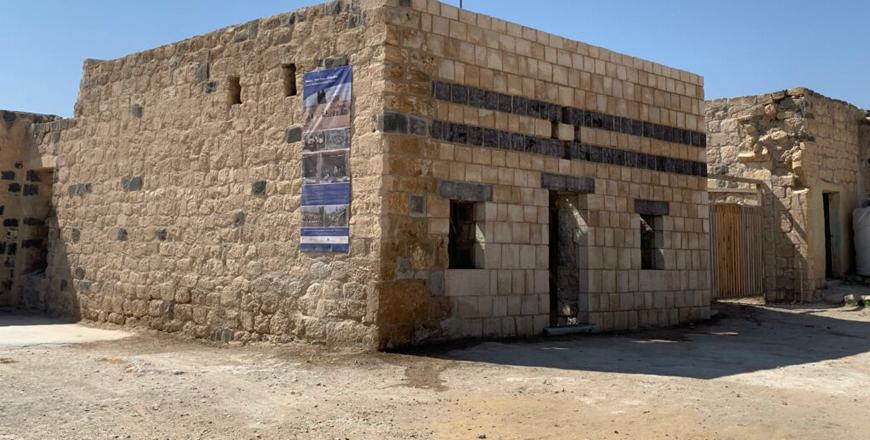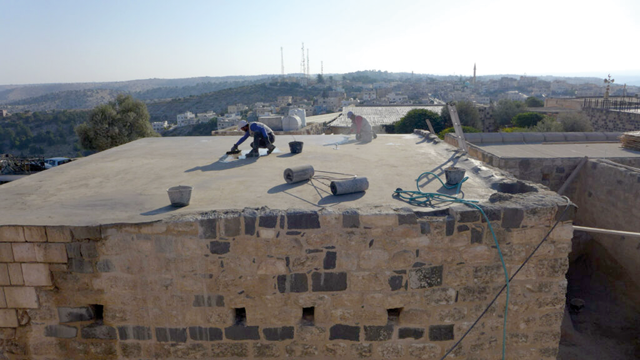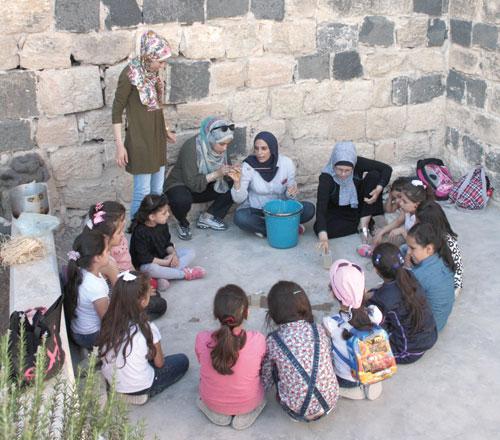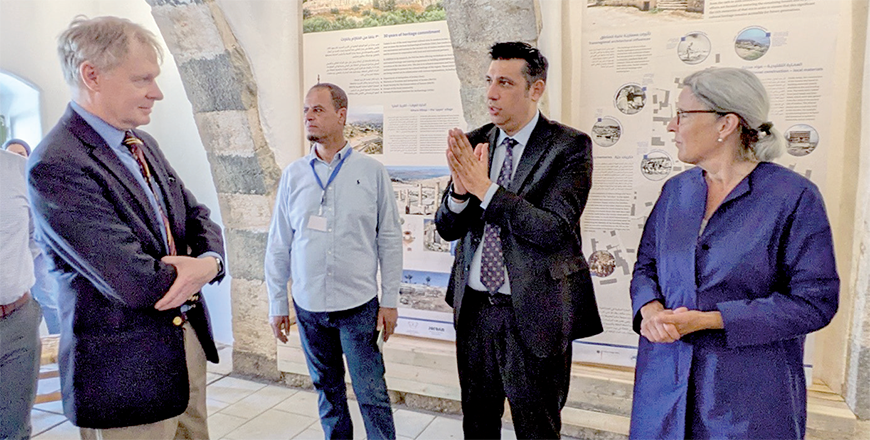You are here
German archaeologists breathe new life into Umm Qais ruins
By Saeb Rawashdeh - Jan 23,2022 - Last updated at Jan 23,2022

The north facade of Madafeh in October 2021 (Photo courtesy of Claudia Bührig)
AMMAN — By 2024, the Bait Rousan courtyard complex in the upper village of Gadara, so called Hara Foqa, is to be restored in accordance with the preservation order, said a German archaeologist in a recent interview with The Jordan Times.
The project is taking place in ancient Gadara (Umm Qais) and is a joint effort between the German Archaeological Institute in Berlin (DAI) and the Department of Antiquities (DoA), and since 2016, the two have provided training courses in Gadara, according to the organisers.
“On one hand, the building fabric is secured and, on the other hand, the courtyard and the rooms can be used for the intended concept as ‘a base for training programmes’,” said project director Claudia Bührig.
She added that “among others, the installation of new windows and doors, commissioning of the cistern for water supply, electrical installation, interior finishing and storage areas” were still required to achieve the final goal.
A long-term concept is currently in development to ensure the buildings use as a training and workshop centre for the building and restoration craft, as well as the processing of archaeological finds, Bührig emphasised.
The project has also been affected by the pandemic, Bührig said, adding that due to the uncertain situation, the planning had to be adjusted and tasks that required a longer lead time were postponed to a later date.
“The German team consisted of a project manager, four master craftsmen, a structural engineer, an architect and a surveyor. From the Jordanian side, eight to 10 skilled and eight unskilled workers were involved, as well as three female employees for the production of the roof mats. Employees from the DoA and the local community were on hand to advise the team,” Bührig underlined.
Talking about the type of the building, Bührig said: “The architecture in Hara Foqa shows similarities to villages in present day Lebanon, the Palestinian territories and southern Syria.”
“This suggests a continuous building activity that possibly extends over almost 100 years. It can also be assumed that the craftsmen who constructed the buildings in Hara Foqa came to Umm Qais from different regions, bringing their own building knowledge with them. In this respect, Hara Foqa is unique,” Bührig concluded.
Related Articles
AMMAN — The collaboration between the Department of Antiquities (DoA) and the German Archaeological Institute (DAI) has extended its i
AMMAN — An exhibition organised for the Atharafoqa area, in the northern part of Umm Qais, was the crown jewel of seven years of cooperation
AMMAN — After years of joint efforts between the Department of Antiquities (DoA) and the German Archaeological Institute in Berlin (DAI), th














